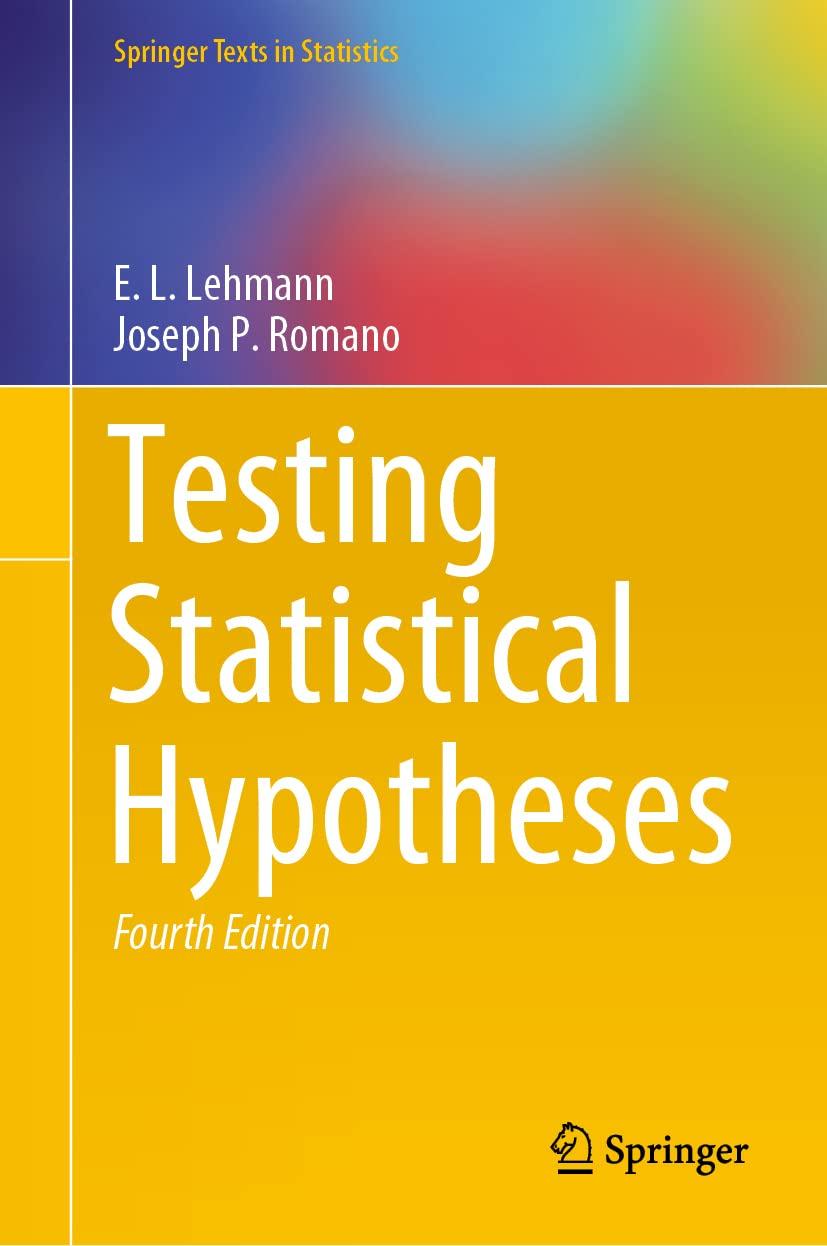(i) Let (X1, Y1), . . . , (Xn, Yn) be a sample from the bivariate normal...
Question:
(i) Let (X1, Y1), . . . , (Xn, Yn) be a sample from the bivariate normal distribution (5.69), and let S2 1 = (Xi − X¯)2, S2 2 = (Yi − Y¯)2
, S12 =
(Xi − X¯)(Yi − Y¯). There exists a UMP unbiased test for testing the hypothesis τ/σ = . Its acceptance region is
|2 S2 1 − S2 2 |
(2 S2 1 + S2 2 )2 − 42 S2 12
≤ C, and the probability density of the test statistic is given by (5.83) when the hypothesis is true.
(ii) Under the assumption τ = σ, there exists a UMP unbiased test for testing η = ξ, with acceptance region |Y¯ − X¯ |/
S2 1 + S2 2 − 2S12 ≤ C. On multiplication by a suitable constant the test statistic has Student’s t-distribution with n − 1 degrees of freedom when η = ξ.
[Due to Morgan (1939) and Hsu (1940). (i): The transformation U = X + Y , V =
X − (1/)Y reduces the problem to that of testing that the correlation coefficient in a bivariate normal distribution is zero.
(ii): Transform to new variables Vi = Yi − Xi , Ui = Yi + Xi .]
Step by Step Answer:

Testing Statistical Hypotheses Volume I
ISBN: 9783030705770
4th Edition
Authors: E.L. Lehmann, Joseph P. Romano






